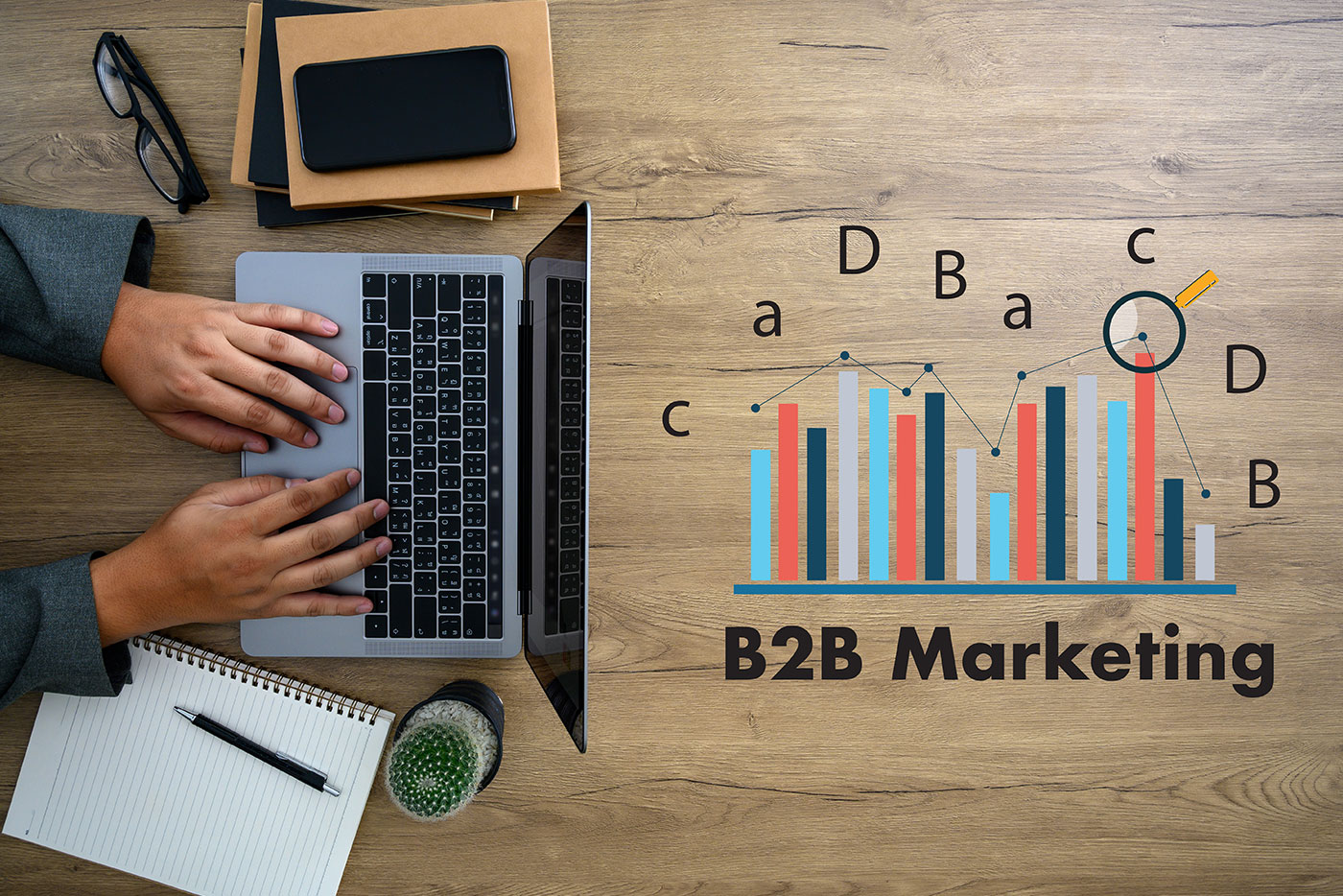The business-to-business (B2B) marketing model focuses on selling or targeting other businesses. The model describes a business that offers goods, products, and services to other businesses. B2B companies exist in every industry, field, and part of the supply chain.
Sometimes, a company or brand traditionally known as business-to-consumer (B2C) can also sell on a B2B channel. For example, a paper towel retailer might sell to the general population while also selling to businesses that need huge supplies of napkins, like a catering company.
B2B Marketing is inherently different from that of B2C. This makes sense considering the direction is towards completely different entities. The first thing every marketing specialist needs to know is who their audience is to tailor marketing to them. Know your customer – the golden rule of business. So when it comes to selling and marketing to consumers versus to other businesses, the goals, time length, and thus, require completely different strategies.
Particularly when it comes to B2B marketing, which is about building trust and authority with high-quality content all across the internet. But what is B2B content marketing exactly?
What is B2B Content Marketing?
Content marketing is all about creating pieces of collateral in various digital (or print) formats as a way to draw in leads and tighten customer relationships. With that in mind, it makes sense why content marketing is especially significant in the context of B2B sales.
For one, drawing in leads as a B2B company is much for higher stakes. B2B companies tend to have a much smaller base of prospects than B2C. Hence, when attempting to draw in leads, the content marketing strategy should employ focused language. It should be incredibly specific, tailored, and cut out all the fluff.
Secondly, content marketing helps bridge the gaps between a business and already existing customers. In B2B marketing, content is vital to their close, long-term relationships with other businesses. That means every piece of content a B2B business creates must be high-quality to align with its brand image. As a fellow business, B2B companies have a reputation to upkeep – and content provides the face of the brand.
FACT: Most B2B buyers are already 57% of the way through the buying process before the first meeting with a representative. (Accenture, 2018)
Types of Content Marketing
Blogs
A B2B company’s site blog is a great foundation for long-term organic traffic, and 80% of B2B marketers use it to their benefit. A blog is the centerpiece of search engine optimization. Additionally, blog posts offer opportunities for calls-to-action, promoting services, building an email list, and providing valuable B2B companies must publish blog posts on a regular basis to maintain search ranking, and have a keyword strategy in place to maximize their visibility. Here is an example of a B2B Blog site:
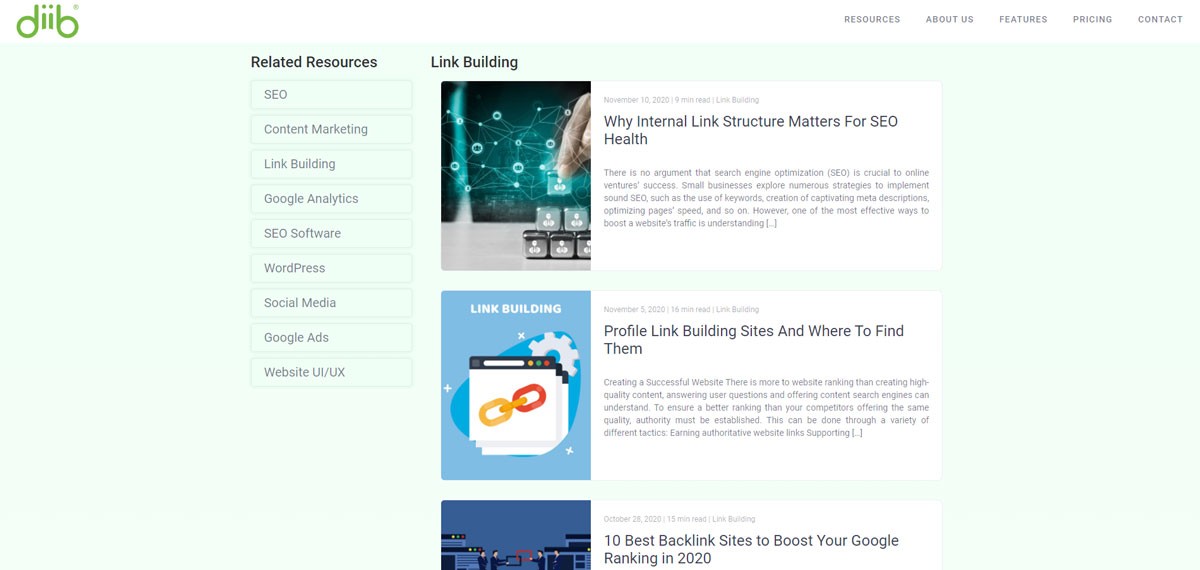
Ebook
Exactly as it sounds, an e-book is a PDF or digital book filled with long-form content about an exhaustive topic related to a B2B company’s industry or product. Downloading ebooks requires entering personal information into a form, providing a way to generate leads. Furthermore, ebooks establish a company as an authority. A good example of a website that does content marketing on self-publishing can be found by visiting artichokepress.com.
Infographic
A more design-based form of content, an infographic is a collaboration of data, useful information, and visuals (images, graphs, charts). Infographics are readable, engaging, and easy to share across channels.
Video marketing
One of the most popular forms of content today, videos can be anything from explainers, quick informative videos, long how-to videos, introduction videos, and testimonials. People love videos because it makes companies feel more personable and they are visually easy to digest. For example:
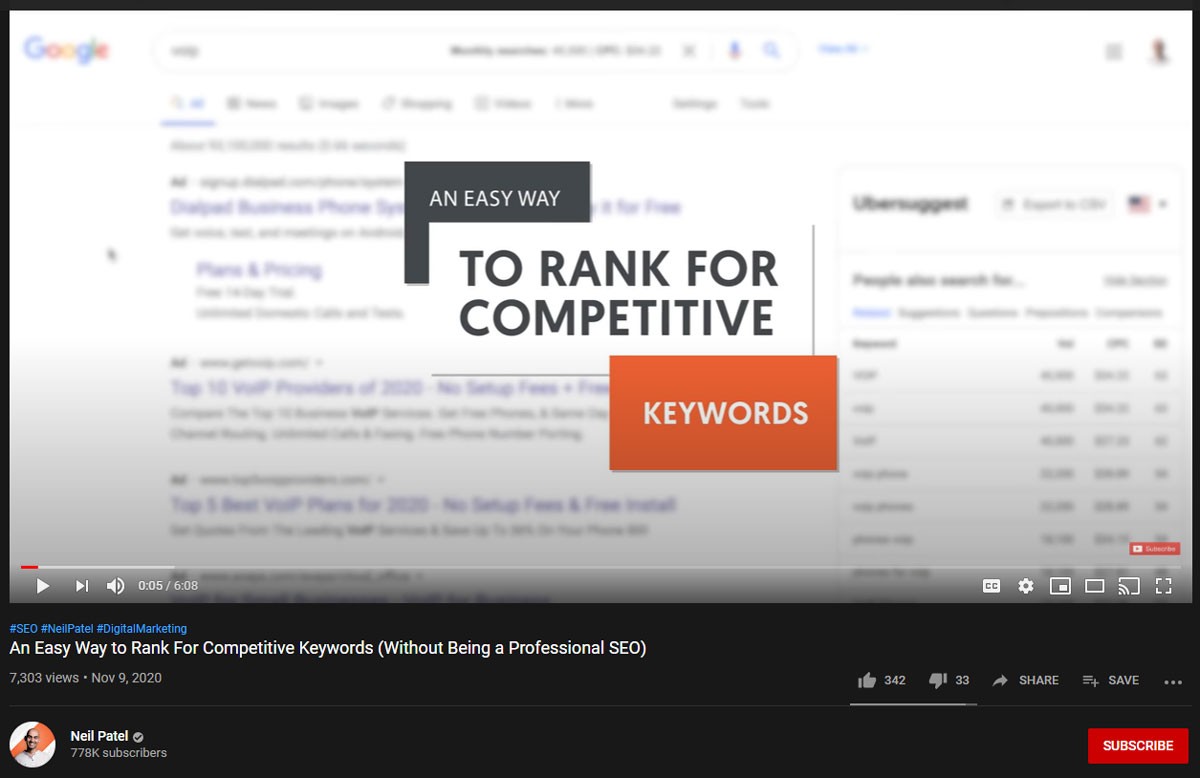
(Image Credit: Neil Patel)
Case study
A case study is a way for B2B companies to show real proof of success as a result of their product or service while showing it in action.
You Might Also Like
White paper
With research-based, highly informative content, a whitepaper is a hallmark of B2B marketing, especially among industry professionals. A whitepaper is practically an academic report that shows the logical need for a solution to an issue. It helps customers see the technical, in-depth case (or use cases) for a company’s product.
Improve your content marketing + SEO in 60 seconds!
Diib uses the power of big data to help you quickly and easily increase your traffic and rankings. We’ll even let you know if you already deserve to rank higher for certain keywords.
- Easy-to-use automated SEO tool
- Get new content ideas and review existing content
- Checks for content localization
- SEO optimized content
- Built-in benchmarking and competitor analysis
- Over 500,000k global members
Used by over 500k companies and organizations:
Syncs with 
Email marketing content
Email campaigns and newsletters are a fantastic way for B2B companies to generate leads. Building an email list helps promote deals, events, or other content (blogs, social media, videos), provides informational content, and it offers a chance to get leads familiar with a brand. For instance:
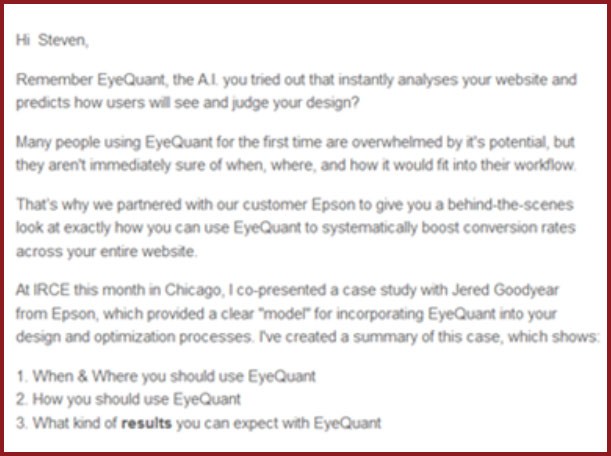
(Image Credit: Super Office)
Social media content
Media, posts, and stories on various social media sites (Twitter, Facebook, Instagram, etc.) are important for B2B to connect with potential and existing customers. What type of platform makes the most sense will depend on the B2B company’s industry, brand image, and of course, their desired audience.
Webinar
Growing more popular in an age of mass remote work, webinars are online events or live videos that a B2B company can orchestrate. Usually, a webinar provides useful, valuable content related to their industry or product, but it doesn’t directly promote the brand. Rather, it feels much like an interactive online course.
The list goes on. Furthermore, different types of content can complement each other, either by fusing or playing off of each other in an omnichannel strategy. For instance, companies can publish a blog post that includes a video from their Youtube channel, and an infographic that they may share on their social media.
What content type is right for you? Well, it depends on your goals.
B2B Content Marketing Goals
Earlier we mentioned that one of the differences in B2B and B2C content marketing is the goals. Because they are geared to two very different audiences, the goals are also somewhat different. The main goal remains the same for both business models: acquire more customers. But it’s not that simple. This broad goal can further be broken down depending on a specific company or industry needs. Particularly, a B2B company needs to know exactly what they want to achieve, to measure results.
To create an efficient content marketing strategy, a defined business goal comes first. A more modern concept in marketing, content strategy is the process of creating a system of planning, creating, and publishing certain types of content – all according to specific business goals.
According to the Content Marketing Institute, several B2B content marketing goals can drive an exceptional marketing campaign. Here are some main goals, but these are not comprehensive.
- Increasing brand awareness
- Increasing engagement
- Lead generation
- Driving sales
- Customer retention
FACT: 46% will leave a website because of a lack of message (it’s not clear what the company does), and 37% will leave because of poor design or navigation. (MarketingProfs, 2015)
Increasing Brand Awareness
To be more visible to potential customers, B2B companies must focus on promoting their brand everywhere. This includes building web traffic, click-throughs, visitors, social media posts or video views, etc.
Increasing Engagement
Usually, regarding social media, engagement refers to the many ways that prospects interact with a B2B brand. Companies can measure engagement with likes, shares, comments, forwards, tags, followers or fans, and so on. For example:
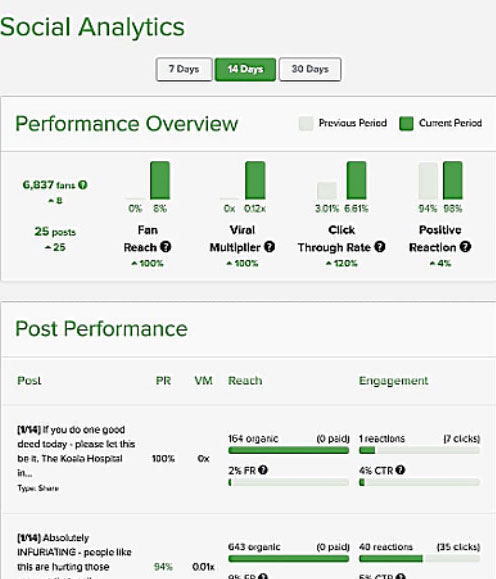
Lead Generation
Increasing leads requires work in increasing traffic to a B2B company’s platforms, usually by enticing visitors to subscribe to an email list or blog. Leads are other businesses already interested in a B2B company’s services, enough to want to regularly receive content from them. Hence, they are perfect targets for sales representatives to guide down the sales funnel.
Driving Sales
Be it online or offline, increasing sales means optimizing your conversion rate across all points-of-sale.
Customer Retention
Relationships with partners and customers is incredibly important for B2B companies. Improving customer retention means making an effort to nurture and engage existing customers and strengthening loyalty over time.
To figure out their goal, a B2B company’s first priority is research. Going in blind is not an option. After all, establishing clear goals is critical to the success of a B2B content strategy.
For one, a goal provides the element of focus to the plan and subsequent content. It helps figure out what channels to focus on. For example, what platforms would make the most sense to publish content according to your goals? If the goal is to drive offline sales, a company might consider direct mail print content. If the goal is to increase leads, a company might create an e-book or an email marketing campaign.
Furthermore, each goal matches up to a specific part of the sales funnel. In other words, a goal might correspond to a different part of a buyer’s journey, which will affect what content you make. For instance, if a B2B company wants to increase brand awareness, that means they aim to target prospects at the top of the sales funnel, the largest part. As such, they will need to use different languages and ways of communication than if the audience was already familiar with the company.
We hope that you found this article useful.
If you want to know more interesting about your site health, get personal recommendations and alerts, scan your website by Diib. It only takes 60 seconds.
B2B Content Marketing Strategy
Once a B2B company has defined goals, it’s time to create the marketing strategy. In a content marketing strategy, also known as content strategy, the goal sets the tone for the plan. What it also does is enlighten you on what metrics to track. A good strategy must have a way of measuring progress. That way, a company can ensure they are receiving a fitting return-on-investment rather than wasting time or money.
Along with metrics, B2B companies must establish a representation of the target audience. As mentioned before, the goal shines a light into where the audience might be in their buying journey. Do they know the B2B company? Are they already interested in the product but have not made a decision yet? However, establishing a target audience for a specific B2B content marketing strategy takes more ideation. B2B companies must pinpoint a clear buyer persona or the most ideal potential buyer. Since we are working with other companies, this job will be simpler than that of B2C companies. There is less of a customer base to work with.
Still, creating a buyer persona requires research. Companies must look at already existing customers, their previous and current businesses with which they work. Understanding what sorts of businesses would be most interested in regarding a B2B company helps in formulating content ideas.
B2B Content Marketing Trends 2021
Content marketing is always shifting. Wave after wave of new content techniques and popular content types occur every year. In 2021, B2B companies have seen major trends to tap into.
Trend #1: Make Content that is Useful, not Sales-y
While this trend has been increasing in popularity gradually over recent years, it’s more important in 2021 than ever. B2B companies cannot ignore the value of informative content. Promotions and copy are not enough to catch (and maintain) the attention of other companies. Choosing a B2B company is a long-term investment that requires all possible information, data, and proof that closing the deal is the right choice for prospects.
Trend #2: LinkedIn is a B2B Company’s Best Friend
LinkedIn is by far the most significant social media outlet for B2B companies. After all, it is a place where brands showcase themselves in a professional way, sharing industry-specific content, connecting with other businesses, and finding leads. In 2021, in an age of online networking, LinkedIn has become instrumental in targeting the exact prospects most likely to benefit from a B2B company’s services. Take a look at the image below to compare what social media platform draws in the most traffic to B2B sites.
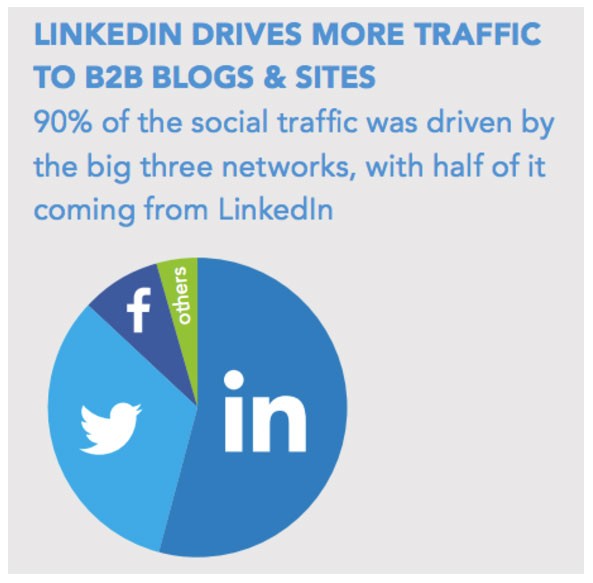
(Image Credit: Foundation Marketing)
Trend #3: Focus on Overall Customer Experience
Today, customer experience (CX) is the next level of high-quality content. Content marketing is nothing if not customer-focused, customer-driven, and contextual. Customer experience refers to the overall perception that a customer may have with a brand, taking all aspects into consideration: brand messaging, touchpoints, social media image, ease-of-use, omnichannel integration, customer service – the list goes on. Content is only a small piece of the experience, but B2B companies make a lot of content over time. Focusing on customer experience as a whole helps all those pieces of content come together into a complete puzzle or the big picture.
Trend #4: Video Marketing is Growing Exponentially
At least 92% of marketing specialists find video marketing to be prominent in their strategies in 2021. It’s effective because it holds a high return for a small amount of investment relative to some other forms of content. It’s easily shareable, great for fast, social media viewing, amazing for SEO, and it brings a B2B brand’s face to the forefront.
Trend #5: Investing in Omnichannel Content Marketing
Alongside CX is a streamlined omnichannel strategy. When B2B brands create content with an omnichannel-focus, they drive a consistent experience between all their touchpoints. From social media to paid ads, blogs to online stores, B2B companies can create content that is contextualized to the channel.
In 2021, omnichannel is important for B2B companies to maintain coherent brand messaging wherever their prospects meet them. If a lead signs up for an ebook through a form that gets specific preferences, a company can now email that lead with personalized information, perhaps including links, videos, and other content relevant to that lead’s preferences. Here is an example of an email with personalized information including reviews from their page and advice:

(Image Credit: Nutshell)
B2B Content Marketing Examples
To get a sense of how B2B companies are utilizing these content marketing trends to their advantage, here are some examples.
The best example of well-executed B2B content marketing trends 2021 has given us is that of companies that entered direct-to-consumer marketing channels. For instance, well-known brand General Electric opened an online D2C store (C by GE) to add another entry point to their omnichannel marketing strategy.
2021 has been a year rich with fantastic video content from many businesses. Particularly, Hubspot, which has been doing video marketing for a long time, is the perfect example of a content marketing winner. In the past, Hubspot has made video courses, informational videos, and marketing videos, like their “What is Hubspot?” video for businesses to use their service software.
Another B2B company, Hewlett Packard Enterprise excelled in offering an enticing customer experience by connecting their brand with a well-known B2C name, like Star Trek. Doing so not only increased their visibility as a B2B presence but also made their video and ad marketing campaign a lot more exciting. This sort of content boosts customer experience because it creates a feeling of relatability and identification among their audience. Here is that example:

(Image credit: ispot.tv)
All of these B2B content marketing examples are only a small percentage of the many cases of successful campaigns across the digital landscape.
Overall, B2B content marketing can be a complex topic. Orchestrating a content marketing campaign is a big feat for all companies. However, for B2B companies, the stakes are much higher. They have the responsibility of maintaining integrity, quality, and informative information. After all, other businesses know how it works, and they do their content marketing as well.
Through your content, language, and brand messaging must speak on the same levels of prospective buyers. Especially since sales cycles and relationships are longer and more tight-knit, B2B companies must personalize their leads. All this together is key to creating an effective B2B content marketing campaign.
On the plus side, content marketing is incredibly flexible. It drives rewarding, creative experiences. In the long-run, content marketing is sure to boost success for a B2B company. Remember, content reaches into the heart of what makes B2B models valuable: close customer relationships and connection.
Diib®: For Your B2B Content Marketing Stats
Diib offers our B2B clients the metrics and statistics they need to make complex decisions. Here are some of the features that our B2B clients report loving:
- B2B keyword, backlink, and indexing monitoring and tracking tools
- User experience and mobile speed optimization
- Bounce rate monitoring and repair
- Social media integration and performance
- Broken pages where you have backlinks (404 checker)
- Technical SEO monitoring
Click here for your free scan or simply call 800-303-3510 to speak to one of our growth experts.
FAQ’s
Automobile manufacturing is one example of B2B marketing that is everywhere. There are many automobile dealerships that sell you their vehicles. However, inside those products are dozens of parts another business sold to them to build the vehicle. Therefore, it is a good example of a business selling to another business.
If you want new customers to find your business and/or services you provide you need to be publishing new and relevant information and content. Content marketing is important because it brings in new and returning customers.
B2B means business-to-business marketing. This means that a business is targeting and selling to other businesses and organizations.
B2B customers have been put into four different categories to help you understand which businesses to market to. The four categories are: producers, resellers, institutions, and governments.
Many companies have needed to adopt both B2B and B2C strategies because of the surge of eCommerce marketing. Google is one of these companies trying to adapt to business-to-business and business-to-consumer marketing strategies.
